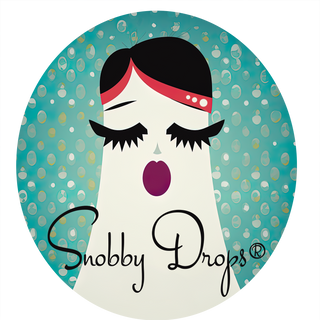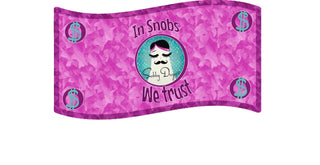Understanding sizes: how Big Should your Backdrop Be?
Whether you’re a seasoned portrait photographer, a studio owner looking to refresh your space, or a creative seeking new photography ideas, you know that the right backdrop can transform an ordinary image into something extraordinary. But amidst the thousands of textures, colors, and patterns available, one foundational question often gets overlooked: understanding sizes—how big should your backdrop be? The answer isn’t always clear, and making the wrong choice can limit your creative options or complicate your workflow.
In this guide, we’ll dig deep into understanding sizes: how backdrops impact your shoots, provide inspiring examples for every space, and help you harness the full power of your studio. Along the way, you’ll find practical tips, expert insights, and a showcase of Snobby Drops’ most versatile options. Let’s create your ultimate photography backdrop toolkit!
Key Ideas: Examples and Scenarios for Different Backdrop Sizes
Choosing the wrong size for your backdrop can mean the difference between an image with clean, uncluttered framing and one filled with distractions or edges that break the illusion. Here’s how to size up your needs—plus real-life inspiration and photography ideas to help you unlock the full potential of your studio.
1. Solo Portraits and Headshots
For single-person compositions and headshots, smaller backdrops are typically sufficient, but they must still be large enough to eliminate blank space and stray backgrounds. The standard recommendations include:
- 5x7 ft (1.5x2.1 m): Ideal for tight headshots or upper-body portraits, especially in compact studios. This size covers the subject and allows for modest posing or accessory options.
- 6x9 ft (1.8x2.7 m): Offers more flexibility for seated poses, creative lighting, or environmental portraits that need slightly wider framing.
Expert Tip: Always position your subject at least a few feet away from the backdrop to create gentle bokeh and avoid casting harsh shadows—another reason extra width can be an asset!
2. Full-Body Portraits and Group Shots
If your portfolio includes full-length shots or families, sizing up is essential to keep feet and hands within frame. Consider:
- 8x10 ft (2.4x3 m): A versatile studio staple supporting full-length poses, couples, or small family groups.
- 10x12 ft (3x3.6 m) or larger: Best choice for dynamic posing, action scenes, or extended families and groups (four or more people). Ensures the background extends beyond the frame, even as subjects move around.
For more insights, see our in-depth resource: Backdrop Size Guide.
3. Creative Concepts and Studio Backdrop Inspiration
Bigger isn’t just better—sometimes, it’s essential. If you’re experimenting with elaborate setups, thematic storytelling, or multi-layer lighting, you’ll discover that oversized backdrops enable seamless transitions and immersive scenes. Some inspiring applications:
- Editorial shoots: Large, seamless backdrops that wrap around your set for a magazine-cover look.
- Fine art series: Floor-to-wall backdrops (10x20 ft or more) that serve as both surface and background, blurring the line between set and subject.
- Creative composites: Bigger canvases allow space for digital manipulation and composites in post-processing.
Explore trends and creative uses on platforms like Pinterest for even more studio backdrop inspiration.
4. Compact Studios, On-Location, and Travel Photography
Space-limited studios and event shoots call for intelligent compromises. Collapsible, portable backdrops in sizes like 5x7 ft are easy to carry and set up, making them ideal for:
- Corporate or acting headshots on location
- Mini sessions at events, weddings, or pop-ups
- Children’s or pet portraits
Consider lightweight materials and adjustable stands for maximum versatility when shooting on the go.
How to Use Backdrops: Maximizing Impact with the Right Size
With the basics of understanding sizes: how big should your backdrop be? under your belt, the next step is application. Here’s how to harness your backdrop’s potential and avoid common pitfalls.
Measure Your Space and Frame
- Studio dimensions: Ensure your backdrop is at least the width of your shooting area, considering any additional space you’ll need for lighting, stands, or props.
- Camera aspect ratio: Adjust backdrop width if you shoot both vertical and horizontal frames—wider backdrops offer greater flexibility.
- Ceiling height: Floor-to-ceiling styles add depth and drama for full-length portraits but require taller studios and proper support systems.
Set Up for Seamlessness
- Hang or stretch the backdrop smoothly to avoid wrinkles and harsh shadows.
- Ensure enough overlap on the floor if you want seamless looks for standing or seated poses.
- Experiment with distance between subject and backdrop for different depth-of-field effects. Closer subjects create sharper backgrounds, while distance softens and blurs the texture.
Creative Applications
- Layering multiple backdrops: Use different sizes in the same shoot for unique foreground or bokeh backgrounds.
- Mini-sets or thematic corners: Small backdrops for special vignettes or product photography.
- Props and furnishings: Ensure your backdrop accommodates all the elements in your set—nothing ruins a shot faster than a chair or lamp spilling off the edge!
Referencing trusted resources, such as the PPA’s guide to photo backdrops, can further enrich your approach to setup and styling.
Snobby Drops Product Showcase: The Right Size for Every Vision
Snobby Drops is committed to elevating your art with hand-painted, printed, and textured backdrops in every size imaginable. If you’re inspired by these concepts but want specific solutions, here’s why photographers choose our collection:
Why Backdrop Size Matters at Snobby Drops
- Flexible sizing options: Most designs are available from compact to oversized, allowing you to select by project type (headshot, creative portrait, group photo) and match your studio’s dimensions.
- Custom and standard dimensions: Not sure what size fits your vision? Our Education collection and Backdrop Size Guide break down recommended uses, popular trends, and customer gallery examples.
- Unique surfaces and finishes: Whether you’re seeking soft clouds, bold textures, or painterly backgrounds, Snobby Drops delivers looks that scale beautifully—no matter what size you choose.

Above: A Snobby Drops 8x10 ft hand-painted canvas—perfect for full-body and duo portraits, styled by Pinterest inspiration boards.

Above: Creative use of a 6x9 ft drop for tight crops and dramatic lighting, demonstrating how backdrops craft mood and narrative even in smaller spaces.
For direct inspiration, don’t miss our About Backdrops (Education) collection, designed to empower photographers with size guides, real-shoot galleries, and material comparisons.
Client Success: Stories from the Studio
Many studio photographers and creatives find that thoughtfully sized backdrops helped them:
- Expand from classic headshots to high-concept fashion sets
- Install seamless setups in unconventional studio spaces
- Offer themed mini sessions—from newborns to dance troupes—using multiple backdrop sizes in a single workflow
Our Education collection teaches not only “what size,” but “what possibilities”—supporting artists as they reimagine their spaces and signature styles.
Conclusion: Your Next Step to Backdrop Mastery
Understanding sizes: how backdrops shape your workflow is a game-changer. With the right backdrop size, your work not only looks more polished—it becomes easier, more creative, and more marketable to your clients. Whether you’re shooting solo portraits, group sessions, or creative sets, matching your backdrop to your vision opens a world of new photography ideas and styles to try.
Don’t leave your art—or your business—limited by the wrong backdrop. Explore Snobby Drops


